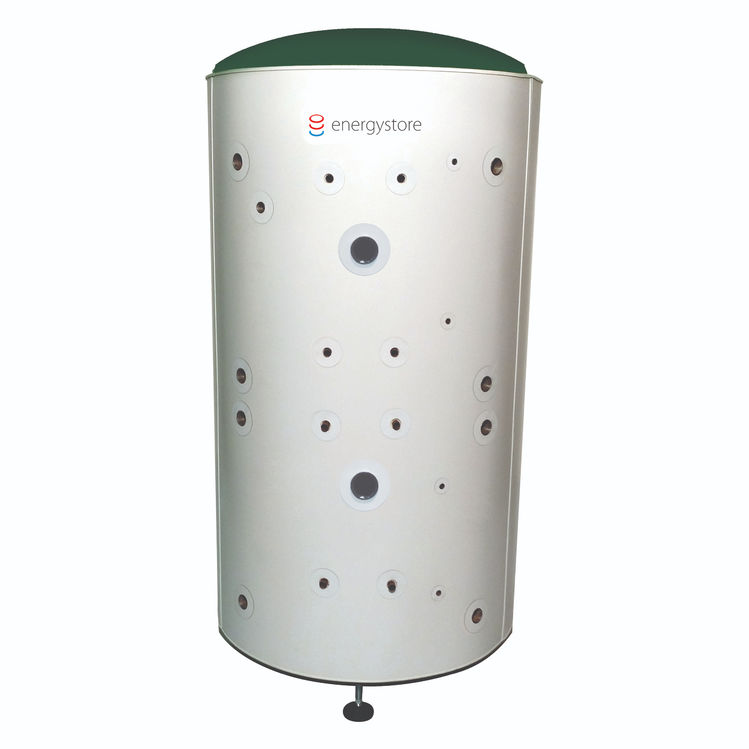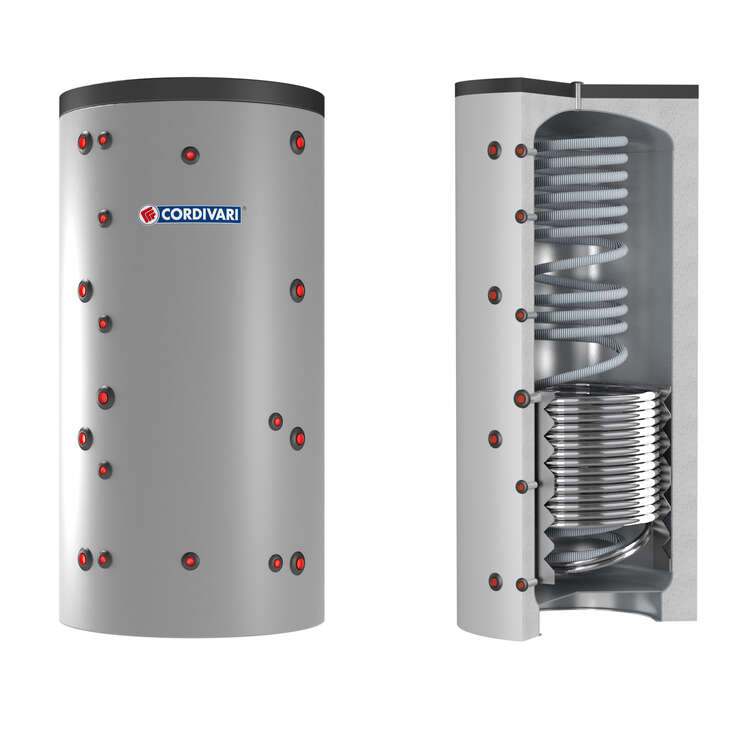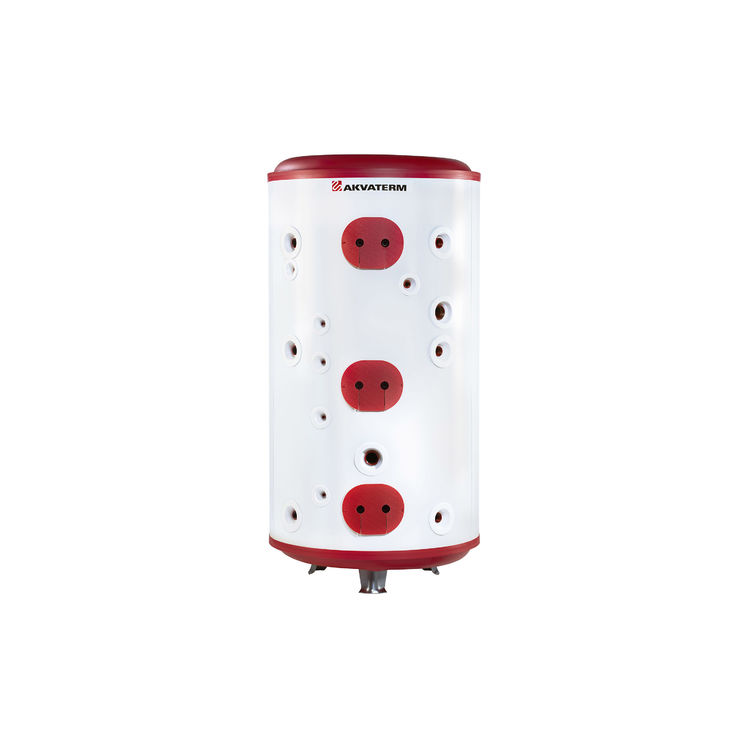Hot water and Thermal Stores

Here we have various ways of storing up heat, from the familiar-looking hot water cylinders required for heat pumps or biomass boilers, to the larger thermal stores used to store up enough heat to warm a home, and of course the game-changing, space-saving solid state heat stores - far simpler to install, and a fraction of the size of a water cylinder.
Renewable energy sources can often have periods of high production - the sun might be bright in the day, you might run a biomass boiler in the evening, or your electricity provider offers lower rates at certain times, meaning you can store up cheap heat from a heat pump. That's where a thermal store comes in - they allow you to store up heat in times of plenty, and then use it as, and when, needed. Thermal stores tend to be quite large, from 500lts and upwards, whereas hot water cylinders do not tend to need to be so large as they tend to only need to store up one day's worth of hot water for showers and so on.
Heat pumps and biomass boilers do not tend to be able to function like a combi boiler, and so you need a hot water cylinder for your water for bathing and washing. These can also allow you to heat the cylinder with the heat pump during the night when electricity is cheap, and to add in solar thermal or PV input in the summer.
And then we have solid state heat stores - these take up a lot less room than the equivalent hot water cylinder, and are a lot simpler, quicker, and cheaper to install because they are safer than using water, and so they do not require all the safety measures and components which water cylinders do.







